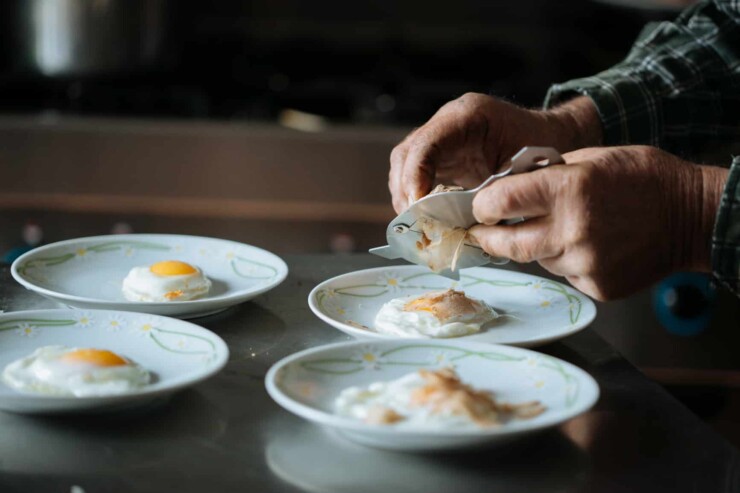
What food is Piedmont famous for?
With the Alps towering in the north and plains perfect for rice paddies in the south you’ll find everything from cheeses to meats to pasta and more. Since cuisine in Italy is regional, there are some dishes you simply can’t miss next time you visit the Piedmont region of Italy.
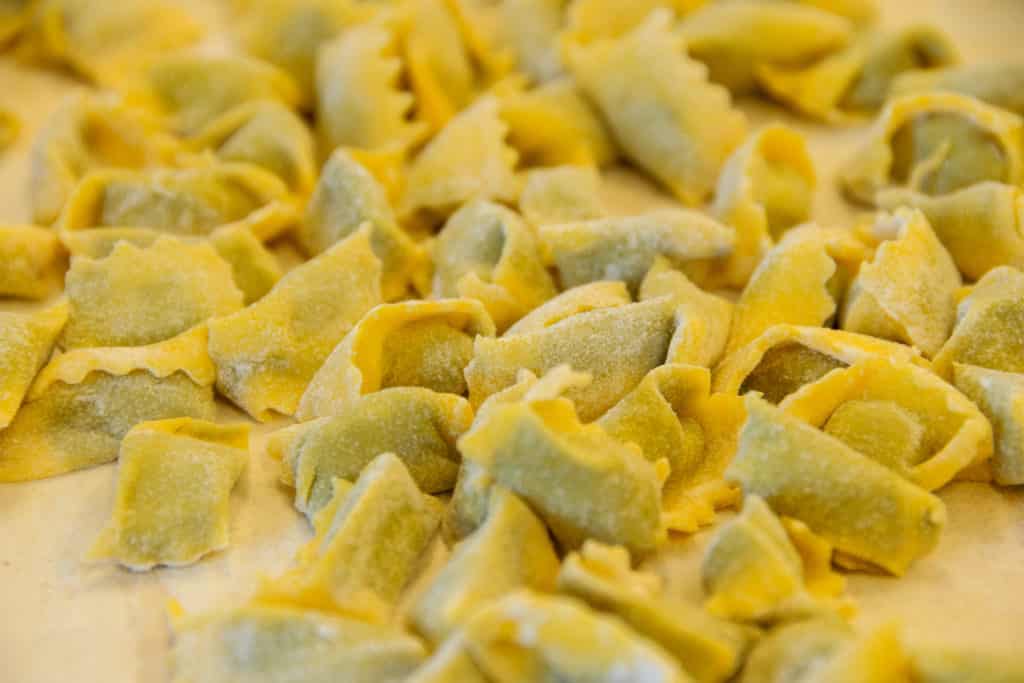
14 Kinds Of Local Piedmont Food To Try
Here are 14 local products and dishes to seek out when you travel to Italy’s Piedmont region.
Agnolotti del Plin
One of the most beloved dishes in Piedmont food, it is believed agnolotti del plin was invented after a Piemontese castle successfully defended itself against an invasion. The chef needed to make a celebratory feast but didn’t have many ingredients, so they roasted some meat and veggies on hand and filled some pasta.
The name for this dish comes from the regional dialect of “to pinch,” which is precisely how this tasty, filled pasta is made. The pasta gets folded over and pinched together during the cooking process, surrounding a mouthwatering filling of roasted meat or vegetables. This differs from ravioli, where two sheets of pasta are used instead of the one for agnolotti del plin.
Baci di Dama
Translating to “lady’s kisses,” baci di dama has become popular throughout Italy but initially are a Piedmont food hailing from Tortona. The cookies, which date back to the 19th century, feature a chocolate cream sandwiched between two hazelnut-flavored cookies.
Today, you may find varieties of this cookie—some made with almonds rather than hazelnuts or some with cocoa added for something extra chocolatey. But in Piedmont, seek out the traditional ones made with local hazelnuts.
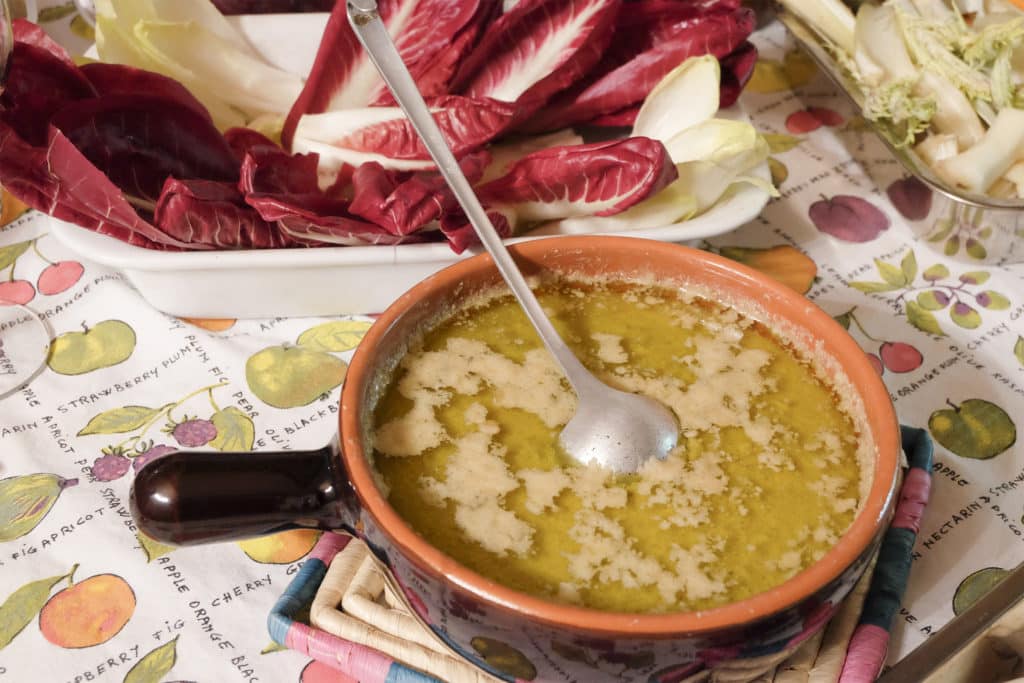
Bagna Càuda
Fondue-like bagna cauda has been around since the 16th century. This slow-cooked dip, which combines olive oil, garlic, and anchovies for a potent yet satisfying flavor, jazzed up the (sometimes limited) winter vegetables historically available in the region.
Today, you might encounter bagna càuda served with cardoon, an edible thistle related to artichoke that resembles a celery stalk. Other vegetables like roasted onions or crunchy raw fennel pair well with this dip.
Bonet
Bonet is one of the most classic Italian desserts, and we insist you try it! It’s a chocolatey pudding with a caramel sauce, topped with amaretti, or almond cookies. The combination of the creamy custard with the amaretti crunch—plus the satisfying mix of chocolate and almonds—is truly divine.
Brasato al Barolo
If you love Barolo wine from the Piedmont region, don’t miss this dish of beef marinated in vino! Not only does this taste incredible with a glass of red wine, but it’s the perfect comfort food.
Expect a decadent, rich flavor from meat with plenty of time to soak in the spices and ingredients. The word brasato comes from the Italian word brace, or embers—hot, glowing coals that kept the meat simmering for an extended time.
Carne Cruda
Translating to “raw meat,” you’ll find this Italian take on steak tartare in the Piedmont, Italy region. The ingredients list is minimal, but the flavor packs a punch—some finely chopped beef, salt, pepper, lemon juice, garlic, and oil.
Prized Fassona beef from Piedmontese cattle makes some of the best meat dishes in this area, so you’ll encounter the highest quality carne cruda in the Piedmont region. You may find it topped with other local delicacies, like Piedmontese hazelnuts or white truffles when eating this.
Fun fact: carpaccio, a dish invented in the 1950s in Venice, is based on carne cruda.
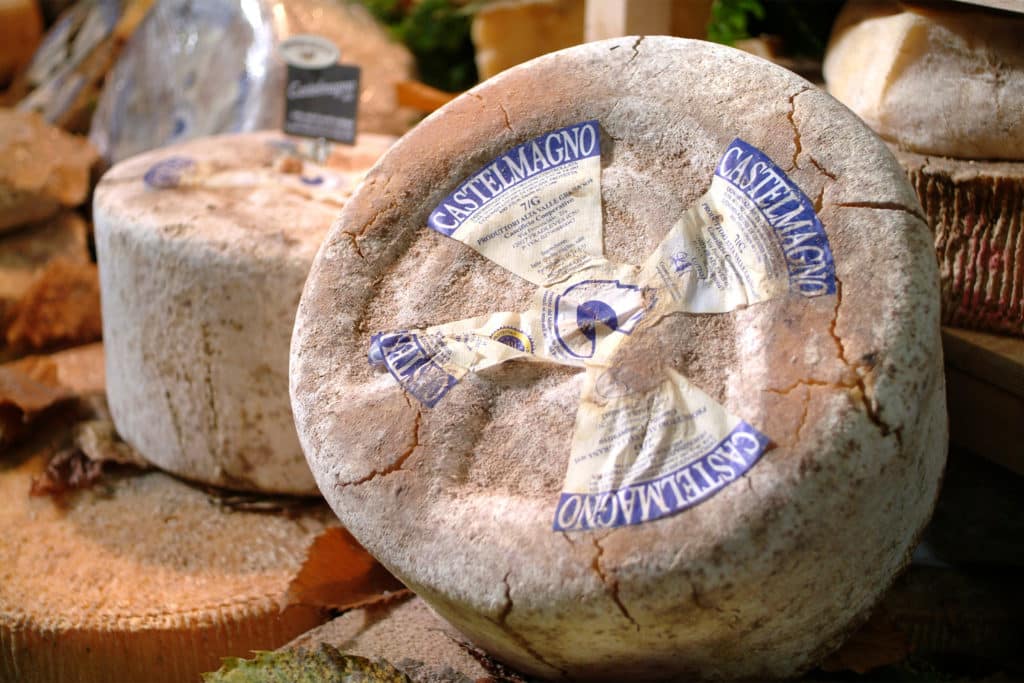
Cheeses Like Castelmagno and Toma
You’ll encounter many types of Italian cheeses in this region (and many of our Italy travel clients love doing a cheese tasting while in the region), but some of our favorites include Castelmagno and Toma.
Castelmagno cheese has a nutty, somewhat tart flavor and comes from cows specific to the Piedmont region. Because it’s dry and a little crumbly, it makes an excellent topping for salads or appetizers.
Toma cheese is a soft cow’s milk cheese that is creamier and more buttery than Castelmagno, and while it tastes fantastic on its own, it also melts well into sauces.
Gianduja Italian Hazelnut Spread
People regard Turin as one of Italy’s most prominent spots for chocolate production, eating and drinking, like a Bicerin. And if you’ve ever had Nutella, you’re familiar with this region’s gianduja chocolate.
This hazelnut paste came about when Napoleon imposed laws that strained the cocoa supply. To make cocoa go further, a chocolatier in Turin mixed in hazelnuts.
Traditionally, gianduja should be at least 30% hazelnuts; Nutella is less than half of that. So when you’re in Piedmont, get the real stuff. Aside from the spread, you might find gianduja in truffles, gelato, or the popular candy Gianduiotto.
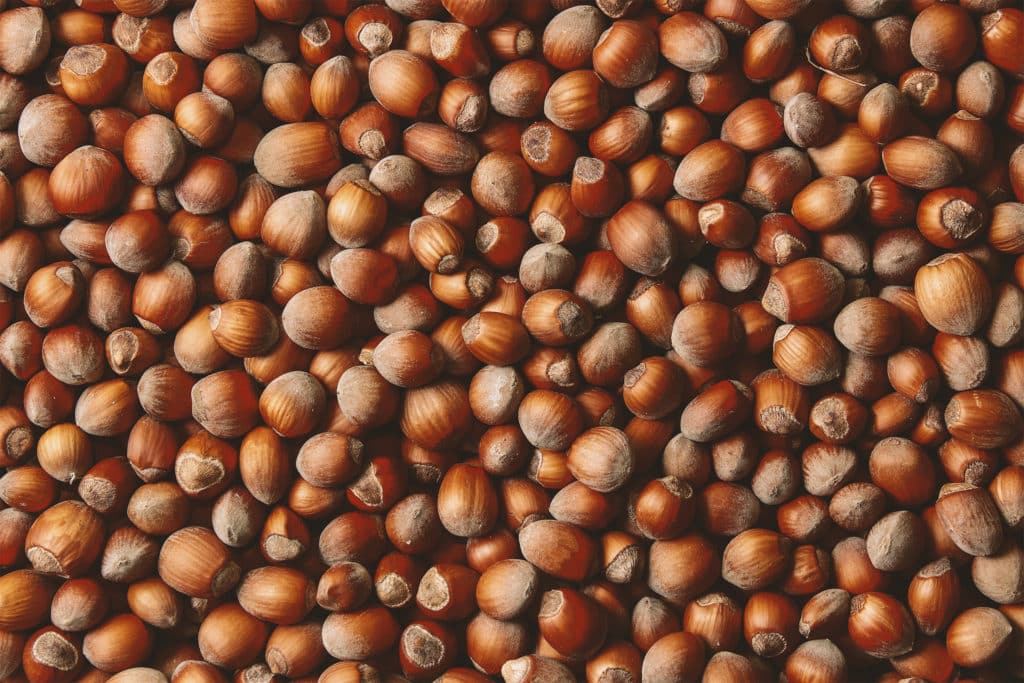
Hazelnuts
While numerous regions in Italy grow hazelnuts, many consider the nocciola del Piemonte among the best. The tiny, round nuts have a satisfying crunch and rich, warm aroma—made even more enticing when roasted.
These nocciole go into Gianduiotto nougat pralines, a delicacy from the region, but also make for excellent pastries, cakes, and gelati.
Panissa
Italy leads rice production in Europe, with much of it growing along the Po River Basin. Risotto rice is a type of high-starch, short-grain rice that can absorb much liquid (and flavor) without turning mushy.
This key ingredient makes Piedmont’s Panissa—not confused with Panissa from Liguria, a fried appetizer made from chickpea flour. Panissa’s main ingredients are risotto and beans, and the texture is similar to stew.
During cooking, red wine enriches the flavor of the risotto and beans of Panissa, and a bit of salami makes for an exquisite finish. Some freshly grated parmesan adds to the creaminess.
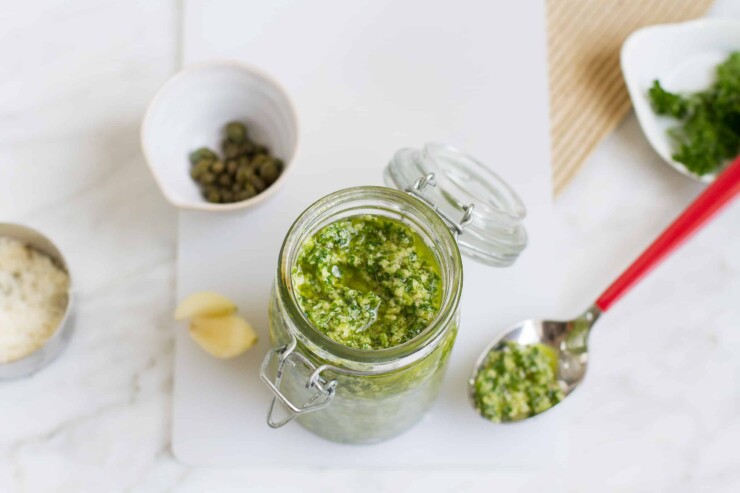
Salsa Verde
You read that right—salsa verde! However, this Italian sauce differs from the spicy green one you know and love in Mexican cuisine.
Made with parsley, garlic, oil, and anchovies, its sharp and zingy taste appears on crostini or hard-boiled eggs for antipasti or as a dipping sauce for meats, fish, and vegetables.
Salsa Verde sauce most commonly pairs with bollito misto, a comforting stew made with beef or veal.
Tajarin
In the Piedmontese dialect, locals pronounce Taglioni or Tagliarini pasta as Tajarin or tie-yah-reen. This may look like spaghetti but belongs to the ribbon pasta family.
While tajarin is incredibly thin à la Cappellini, it measures 2-3 millimeters wide—thicker than Capellini’s 0.85 and 0.92 millimeters yet still thinner than tagliatelle, which clocks in at around 6 millimeters. Tajarin has a flat rather than round shape.
What is the other big difference between tajarin and spaghetti? While other pasta in Italy don’t use eggs or rely on flour like durum wheat or semolina, Tajarin is made from egg yolks and flour. This makes the flavor more savory, and it pairs well with light sauces like sage and butter or delicate white truffles.
Traditionally, Tajarin pasta requires one egg per 100 grams of flour. Some recipes may call for up to 40 yolks per kilo, though. If you’d like to make some of your homemade pasta, check out our tips for making fresh pasta!
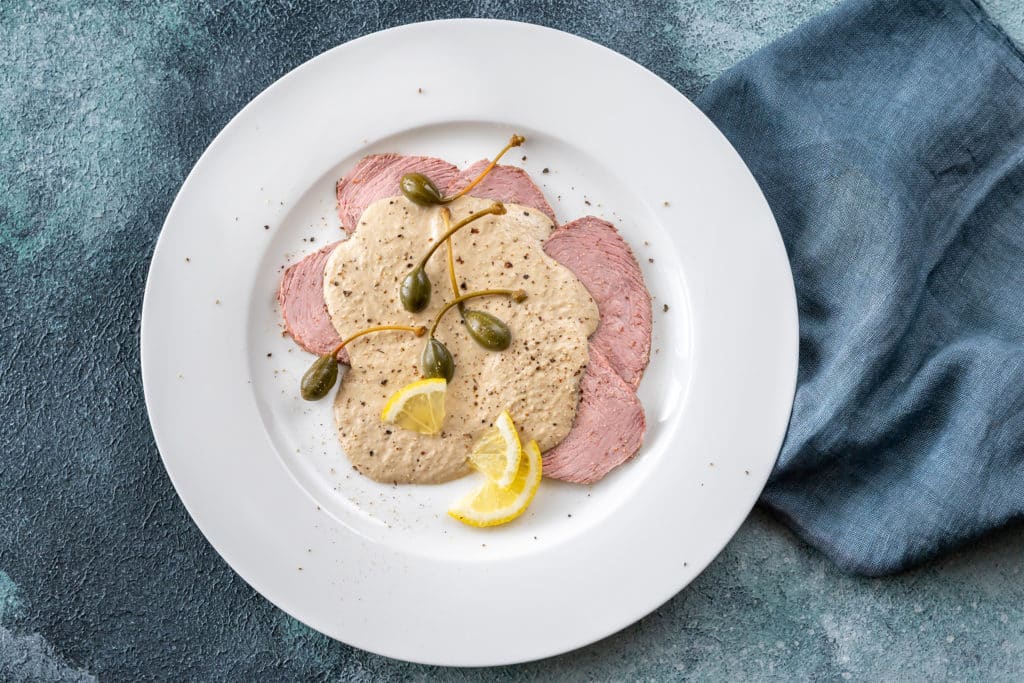
Vitello Tonnato
Vitello Tonnato—veal with a creamy, tuna-flavored sauce—came onto the scene in the 18th century. Not only did this dish have its moment in the culinary sun in the 1980s, but it gained popularity in various other countries around the globe (even Argentina).
Because the recipe has had such a wide reach, you’ll encounter variations. The traditional Piedmont dish consists of thin slices of veal that resemble roast beef topped with a sauce that has the consistency of mayonnaise, plus garnishes of capers, parsley, anchovies, and lemon slices
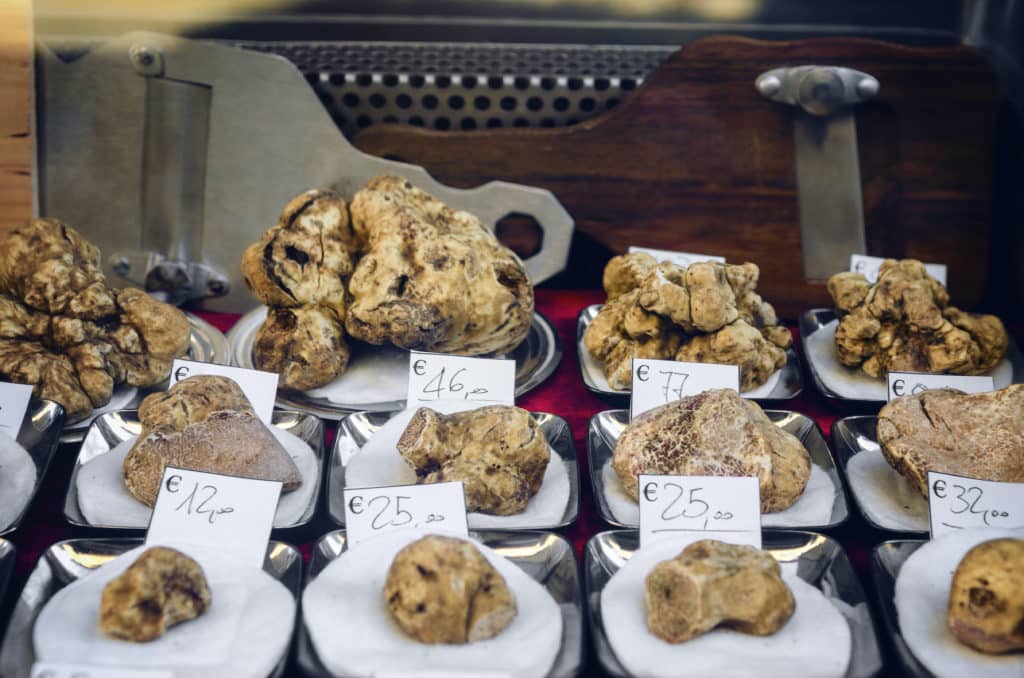
White Truffles
White truffles are rarer than other truffles, which, along with a distinct umami flavor, makes them highly desirable. White truffles have a delicate taste, which is why they’re rarely cooked. Instead, you’ll find them shaved on dishes or infused into oil or butter.
Some of the finest white truffles in the world come from Alba, a town southeast of Torino. Truffle season and the chance to truffle hunt happen roughly from September to December.
What will you order first when you visit Italy’s Piedmont region? Comment below and let us know which dish—or dishes—you’re most excited to try!
Frequently Asked Questions About Piedmont Food
Piedmont, known for its rich and diverse cuisine, offers a variety of dishes that highlight the region's culinary expertise:
- Castelmagno Cheese: A semi-hard, blue-veined cheese made from cow’s milk, often used in risottos or with honey.
- Bonet: A traditional dessert similar to flan, made with amaretti cookies, cocoa, caramel, and sometimes rum.
- Baci di Dama (Lady's Kisses): Delicate cookies made from hazelnut flour, filled with a layer of dark chocolate.
- Agnolotti: Small, stuffed pasta similar to ravioli, typically filled with a mixture of roasted meats and served with a roast meat sauce or butter and sage.
- Bagna Cauda: A warm dip made from garlic, anchovies, olive oil, and butter, traditionally served with raw, roasted, or boiled vegetables.
- Panissa: A risotto-like dish made with Arborio rice, Barbera wine, beans, and salami.
- Carne Cruda: Piedmont’s version of steak tartare, typically made from raw veal, seasoned with lemon juice, olive oil, salt, and pepper.
- Vitello Tonnato: Slices of cold, cooked veal covered in a creamy, tuna-based sauce.
- Tajarin: A type of thin, egg-rich pasta served with various sauces, often a simple butter and sage or meat ragù.
Its geographical and historical context deeply influences Piedmont's culinary traditions:
- French Influence: Due to its proximity to France, many Piedmontese dishes reflect French culinary techniques and styles, which is evident in dishes like Vitello Tonnato and Carne Cruda.
- Rich Agricultural Heritage: The abundant local produce, from truffles and hazelnuts to rich dairy products, shapes the regional cuisine, making it known for its simplicity and elegance.
- Wine Culture: Piedmont is one of Italy’s most famed wine regions, and many dishes like Panissa and Tajarin are prepared using local wines, enhancing the flavors and linking cuisine and viticulture.
Agnolotti and ravioli are both types of Italian stuffed pasta, but there are distinct differences that set them apart:
- Shape and Origin: Agnolotti is typically associated with the Piedmont region and is usually square or rectangular with a less defined edge, often made by folding a sheet of pasta over the filling. Ravioli, which can be found across Italy, is typically square with a more pronounced, sealed edge and is made by sandwiching the filling between two sheets of pasta.
- Filling: The fillings can also differ; agnolotti traditionally has a meat-based filling, using a mix of roasted meats and sometimes vegetables or cheese. Ravioli fillings can be more varied, including cheese, vegetables, and seafood, depending on the region and recipe.
- Serving: Agnolotti is often served in a broth or with a simple butter and sage sauce to enhance but not overpower the rich filling. Ravioli might be served with heavier, more complex sauces like marinara or cream-based sauces, which can accommodate a wider variety of fillings.
Get A Personalized Travel Itinerary

Wineries In Piedmont
No exploration of Piedmont’s cuisine would be complete without tasting its world-renowned wines. From the elegant Nebbiolo-based Barolo and Barbaresco to lesser-known gems like Dolcetto and Arneis, the region’s wines are the perfect companions to its dishes. Be sure to check out our guide to wineries in Piedmont, which covers the top estates, from historic cellars to innovative producers, and how to plan the ultimate wine tasting itinerary.
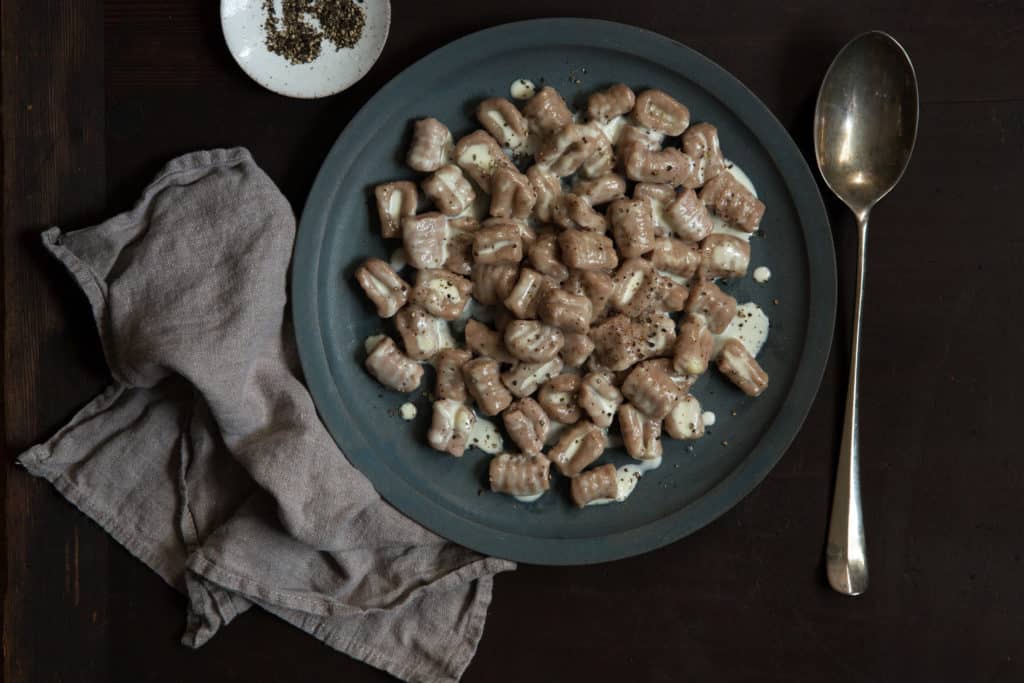
Classic Piedmontese Recipes
Want to cook up some flavors of Piedmont? Here are a few of our readers’ favorite classic Italian recipes:
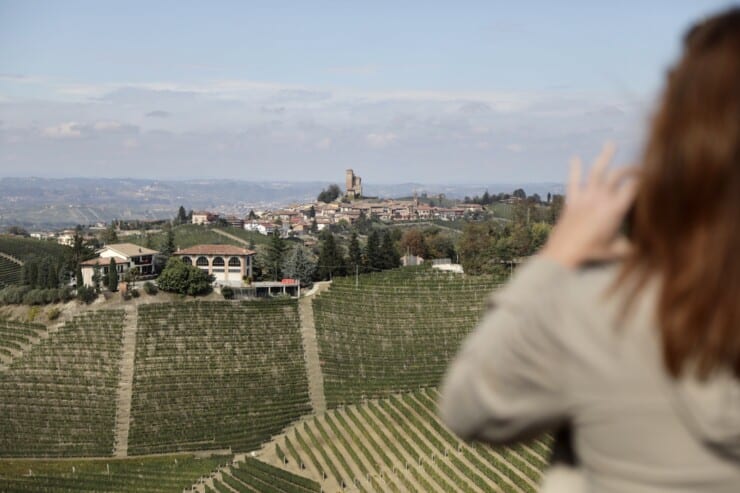
Piedmont Travel Guide
Are you considering traveling to Turin and the Piedmont region in real life? Check out our free Piedmont Travel Guide for our best travel tips, recipes, and articles on Italy.
Have Us Plan Your Italy Trip
Are you looking to travel to Piedmont, Italy? Our Italy travel planning services are here to help you achieve the ideal vacation. After discussing your preferences during a short consultation, we’ll plan your perfect itinerary.
Photo Credit: Opening photo by Peter Karas; Bagna Cauda by By mvatrabu; Castelmagno cheese by Luigi Bertello; Hazelnuts by Svetlana_Smirnova; Tajain and Agnolotti pasta by cosca; Vitello Tonnato by Alexander Prokopenko